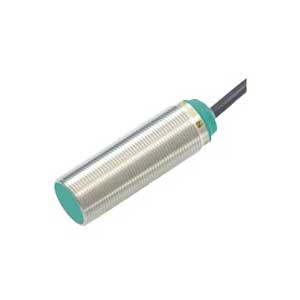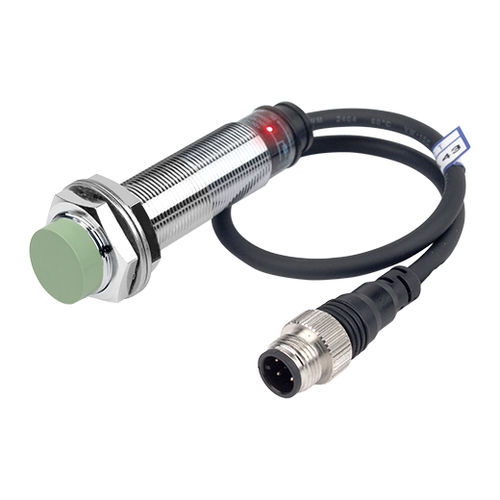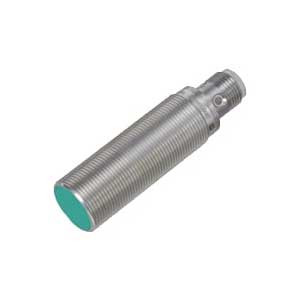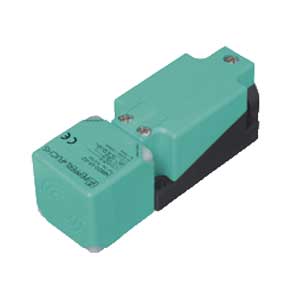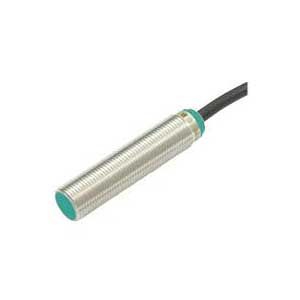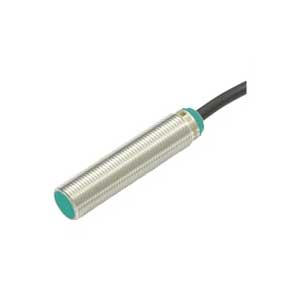
Inductive proximity sensors are commonly used in industrial automation product to detect the presence or absence of metallic objects without physical contact. These sensors use electromagnetic fields to detect the presence of metal objects within their sensing range. However, with a wide range of inductive proximity sensor types available on the market, it can be challenging to understand the technical terminology associated with these sensors.
To help you navigate the terminology associated with inductive switches, we have put together this comprehensive guide. We will explore the different designs, materials, and configurations of inductive proximity sensors, as well as the electrical connections, output types, and switch functions commonly used.
By the end of this guide, you will have a better understanding of the terminology associated with inductive proximity sensors, which will enable you to make informed decisions when selecting a sensor for your specific application.
So, let’s dive in!
#
2 Wire Proximity Sensor:
A 2-wire proximity sensor is an inductive sensor that uses only two wires for power supply and signal output. These sensors generate an electromagnetic field around their sensing face, and when a metallic object enters the field, it changes the field, which the sensor detects.
The sensor’s output signal is typically a simple on/off signal that switches between the normally open (NO) and normally closed (NC) states, depending on the sensor’s configuration. Although 2-wire proximity sensors are simple and easy to install due to their two-wire setup.
3 Wire Proximity Sensors:
A 3-wire proximity sensor is an inductive sensor that uses three wires for power supply and signal output. These sensors generate an electromagnetic field around their sensing face, and when a metallic object enters the field, it changes the field, which the sensor detects.
The sensor’s output signal is typically a voltage signal that switches between a high and low voltage level, indicating the presence or absence of the metallic object within its sensing range. 3-wire proximity sensors are easy to install and use due to their simple wiring and output signal.
4 Wire Proximity Sensors:
A 4-wire proximity sensor is an inductive sensor that uses four wires for its connection. These sensors typically have two wires for power supply and two wires for signal output. One of the output wires is for the normally open (NO) signal, and the other is for the normally closed (NC) signal. Some brands of 4-wire proximity sensors may have only two wires for the power supply, with one wire for the NO signal and one wire for the NC signal.
4-wire proximity sensors offer greater flexibility and versatility in how the sensor output is used, with both NO and NC functions available in some models. Additionally, some brands offer 4-wire sensors with both PNP and NPN switching functions in one sensor.
When selecting a 4-wire proximity sensor, it’s important to check the manufacturer’s specifications and wiring instructions to ensure proper installation and use of the sensor.
A
AC Power Supply
The power supply is an essential aspect of any proximity sensor. AC inductive proximity sensors typically operate on a range of 100-240VAC, with minor variations depending on the manufacturer. The power supply provides the necessary energy to operate the sensor and produce an electromagnetic field.
AC power is advantageous because it can travel over long distances without significant loss of voltage, making it suitable for large installations. However, it is important to note that AC sensors may produce electromagnetic interference (EMI), which can affect nearby electronic devices.
AC/DC Power Supply
Proximity sensors can operate using either AC or DC power supply, with some sensors designed to work with both. AC/DC proximity sensors typically operate on a range of 100-240VAC/DC, with minor variations depending on the manufacturer.
These sensors offer the flexibility to choose between an AC or DC power supply, depending on the specific requirements of the application.
Analog Current Output
An analog current output proximity sensor is a type of sensor that provides a continuous current output proportional to the distance between the sensor and the object being detected. The analog proximity sensor emits a signal, and the presence of an object affects the signal strength.
The analog current output is used for continuous distance monitoring and is more precise than digital sensors. These sensors are commonly used in industrial automation applications where precise distance measurements are required.
Analog Voltage Output
An analog voltage output proximity sensor is a type of sensor that provides a continuous voltage output that varies linearly with the distance between the sensor and the object being detected. The sensor emits a signal, and the presence of an object affects the signal strength, which is then converted into an output voltage.
The output voltage can be used to interface with other electronic devices and is commonly used in industrial automation applications where precise distance measurements are required. Analog voltage output proximity sensors offer a high degree of accuracy.
AS-Interface Output
Proximity sensors with AS-Interface output offer a simple and cost-effective solution for connecting sensors to a control system. AS-Interface is a popular industrial network protocol that uses a simple two-wire bus system to transmit data between sensors and actuators.
Proximity sensors with AS-Interface output can communicate directly with a master control system using the AS-Interface network, eliminating the need for additional wiring and reducing installation costs.
AS-Interface sensors are available in a range of sizes, shapes, and sensing technologies to suit different applications. When selecting an AS-Interface proximity sensor, it is important to consider the sensor’s operating environment, sensing range, and compatibility with the control system.
C
Cable Length
Proximity sensors with cable output are available in different cable lengths to suit different applications. The cable length typically ranges from 0.5 meters to 10 meters, depending on the manufacturer and sensor type. The cable length is an essential factor to consider when selecting a proximity sensor because it affects the installation location and the cost of the sensor.
A longer cable length can offer greater flexibility in positioning the sensor, but it can also increase the risk of electrical noise and signal degradation. When selecting a proximity sensor with cable output, it is important to choose the appropriate cable length based on the specific requirements of the application, such as the distance between the sensor and the control system.
Cable Type
Cable type proximity sensors are a type of proximity sensor that features a sensor head attached to a cable, which provides a signal indicating the proximity of an object.
The cable length can vary, commonly available in lengths of 0.5m, 2m, 5m, and 10m.
Cable With Connector Type
Cable with connector-type proximity sensors comes with a cable that has a connector at the end, which is either an M8 or an M12 connector.
The cable length for these sensors is typically 0.5m or 1m. The cable with connector type is preferred in applications where the sensor needs to be quickly and easily replaced or where the cable needs to be securely attached to the sensor.
Change over Contact
Proximity sensors with changeover contact output provide a physical switching element function of a relay contact unit. The changeover contact is designed to be connected to the normally closed (NC) contact when the sensor is switched off. When the relay is turned on, the contact unit is connected to the normally open (NO) contact. These contacts are normally volt-free contacts, which ensures that there is galvanic isolation between the sensor circuit and the load current circuit.
The changeover contact can be designed as an electromechanical contact or as an electronic switch. Electromechanical contacts offer high current-carrying capacity but have a limited switching frequency due to the inertia of moving masses. Changeover contacts with electronic contacts have a similar current-carrying capacity to other electronic switching output stages with a high switching frequency, while still retaining the volt-free operation feature.
Complementary Switching Function
Proximity sensors with a complementary switching function have two built-in switching output stages – one “normally open” and the other “normally closed”. This allows for a reduction in the number of sensor types needed for a plant, saving on storage space.
The complementary design of the switching output stages is mostly used for diagnostic purposes. If the two switching outputs have opposing states, then the sensor is functioning correctly.
Connector Type
In connector-type proximity sensors, the cable does not come at the end of the sensor, but rather a connector is attached at the end of the cable that plugs into the sensor.
The connector type used for the sensor depends on the specific application requirements, with the most common connector types being M8, M12, and M18.
The connector allows for easy installation and replacement of the sensor without the need for wiring or other complicated connections.
Cubic Design
Cubic design proximity sensors are a type of proximity sensor that features a unique cubic shape. These sensors are used to detect the presence or absence of an object and provide a signal indicating the proximity of the object.
The cubic design allows for a wider detection range, as the sensor can detect objects from multiple directions, rather than just from a single direction.
Examples of Sizes are 30 x 30 x 90, 12 x 40 x 26, 10 x 28 x 16, 80 x 80 x 40, 40 x 40 x 120 etc.,
Cylindrical Design
Cylindrical design proximity sensors are a type of proximity sensor that features a cylindrical shape with a threaded body.
These sensors are used to detect the presence or absence of an object and provide a signal indicating the proximity of the object.
They are available in different sizes, including M4, M5, M6, M8, M12, and M18 Inductive Sensors, to fit various applications.
Cylindrical Smooth Sleeve
Cylindrical proximity sensors with a smooth sleeve are designed for ease of installation and removal. These sensors do not have threads and are designed to fit into a smooth, round hole, making them simple and quick to install.
This type of sensor is ideal for applications where installation and removal need to be completed quickly and easily. However, smooth sleeve sensors are less secure than threaded sleeve sensors, which can make them unsuitable for applications where a robust attachment is required.
Cylindrical Threaded Sleeve
Cylindrical proximity sensors with a threaded sleeve are designed for a more secure installation. These sensors have threads on their sleeve, which allows them to be screwed into place, making them ideal for applications where vibration or movement is a concern.
Threaded sleeve sensors are more secure than smooth sleeve sensors, but their installation process can be more time-consuming because the threads must match the mating threads in the installation hole.
D
DC Power Supply
Proximity sensors that use DC power supplies usually require a voltage range of 5 to 36 VDC. However, this may vary slightly depending on the manufacturer. With a DC power supply, the voltage is constant and does not fluctuate as it does with an AC power supply.
This makes it easier to regulate and control the power supply to the sensor. Additionally, using a DC power supply can help minimize electrical interference or noise that can affect the sensor’s accuracy and reliability.
Dia (Sensor Head Dia)
When it comes to cylindrical proximity sensors, the diameter of the sensor head is an important consideration that is based on the requirements of the application. The sensor head diameter determines the size of the sensing area, which in turn affects the sensor’s ability to detect objects at certain distances or in certain environments.
Some common sensor head diameters for cylindrical proximity sensors include M4, M5, M6, M8, M12, M18, and M30.
Digital Current Output
Proximity sensors with digital current output are a type of inductive sensor that issues a switching signal in the form of two discrete current values. These sensors are typically used for presence detection, where the object detection state is transmitted as a binary signal.
For example, an output current of 5 mA indicates that no object is detected, while an output current of 10 mA indicates that an object is detected. These sensors can be useful for simple applications where a binary signal is sufficient, and they are typically easy to integrate into existing systems due to their compatibility with standard digital inputs.
Digital Voltage Output
Proximity sensors with digital voltage output provide a binary signal output based on the detection of an object. The signal output is in the form of two discrete voltage values, which can be used to determine the presence or absence of an object.
The two voltage values are typically referred to as the “high” and “low” states. The “high” state indicates the presence of an object and the “low” state indicates the absence of an object.
The output voltage level for the “high” state is typically close to the supply voltage, while the output voltage level for the “low” state is typically close to zero. This type of output is commonly used in automation and control applications.
Double Sensing
A double-sensing proximity sensor is a type of sensor that is designed to detect the presence of objects from a greater distance than traditional sensors. Unlike standard sensors, double-sensing proximity sensors have an additional protective layer or sensing element that helps to increase their durability and reliability.
Double-sensing proximity sensors are a reliable and accurate way to detect objects, and their extended sensing distance helps to protect the sensor head from damage, making them an ideal solution for harsh environments or applications.
E
Extended Temperature
Proximity sensors with extended temperature ranges are designed to operate in extreme temperatures. They are suitable for use in applications where standard sensors would not be able to withstand the temperature conditions.
These sensors have a wider temperature range than standard sensors, which typically operate between -25°C and 70°C. Extended temperature sensors can operate in temperatures ranging from -40°C to 100°C or even higher, depending on the manufacturer.
The extended temperature range is achieved by using special materials in the construction of the sensor, such as high-temperature resistant plastics or metals, and by incorporating advanced thermal management techniques.
F
Flush Mounting
Proximity sensors come in different types of housings, including flush mounting housings. Flush-type proximity sensors are designed to be installed in a way that the sensor head is flush with the surface of the material it is mounted on.
This allows for the sensor to be more discrete and less likely to be damaged in high-traffic areas.
H
High Pressure
High-Pressure Proximity sensors are designed to function accurately and reliably under extreme pressure conditions. One of the key features of these sensors is their pressure rating, which specifies the maximum pressure they can withstand without damage.
High-pressure proximity sensors are typically constructed of materials such as stainless steel or titanium, which can withstand high pressure without deformation or failure.
Housing Material
Proximity sensors are available in a variety of housing materials, each with its own set of advantages and disadvantages. The plastic housing is lightweight and affordable, but may not be suitable for high-temperature or high-pressure applications. Brass-coated sensors offer better durability and resistance to corrosion, making them a good choice for harsh environments.
Stainless steel sensors are extremely durable and resistant to corrosion, making them ideal for use in harsh and corrosive environments. High-grade steel sensors are similar to stainless steel, but with even greater durability and resistance to corrosion. When selecting a proximity sensor, it’s important to consider the environmental conditions in which it will be used to choose the most appropriate housing material for your application.
I
Inductive Proximity Sensors
Inductive proximity sensors are widely used in industrial and commercial applications to detect metallic objects without physical contact. These sensors operate by generating a high-frequency electromagnetic field and detecting changes in that field caused by the presence of a metallic object. They are reliable and have a long service life, making them a popular choice for machine monitoring, automation, and robotics applications.
Inductive proximity switches are available in a variety of shapes and sizes to fit different applications. They can detect metallic objects at a range of distances, from a few millimeters to several centimeters. Additionally, they are immune to dust, oil, and other contaminants, making them ideal for use in harsh environments.
These sensors are easy to install and maintain, and once installed, they require no adjustment. They are also very accurate and can detect objects at high speeds. Inductive proximity sensors are widely used in manufacturing, Automotive, food processing, packaging, and other industries.
IO-Link Output
Proximity sensors with IO-Link output provide a reliable solution for industrial automation applications. These sensors use input/output signals to provide data through a standardized M8 or M12 plug for intelligent communication of sensors and actuators at the field level.
IO-Link sensors are particularly suited for use in IoT applications, where large amounts of data need to be transferred quickly and accurately. In addition to their ability to communicate with IO-Link masters, IO-Link sensors can also be used in conventional applications without IO-Link communication.
This versatility makes proximity sensors with IO-Link output a popular choice for manufacturers and system integrators in a variety of industries.
IP65
Completely protected against the ingress of dust and protected against low-pressure jets of water from any direction.
This rating indicates that the proximity sensor is completely protected against the ingress of dust, and is also protected against low-pressure jets of water from any direction. This makes IP65-rated sensors suitable for use in environments where exposure to dust and low-pressure water jets is a concern
IP66
Completely protected against the ingress of dust and protected against powerful jets of water from any direction.
A proximity sensor with an IP66 rating provides the same level of dust protection as IP65 but is also protected against powerful jets of water from any direction. This rating is suitable for use in harsher environments where exposure to powerful water jets is a concern.
IP67
Completely protected against the ingress of dust and protected against the effects of immersion in water up to 1 meter for 30 minutes.
In addition to providing protection against dust and low-pressure water jets, an IP67 proximity sensor rating is also protected against immersion in water up to 1 meter deep for up to 30 minutes. This rating is suitable for use in environments where the sensor may be exposed to occasional immersion in water.
IP68
Completely protected against the ingress of dust and continuous immersion in water beyond 1 meter for a specified period of time.
A proximity sensor with an IP68 rating provides the same level of protection against dust and water as IP67, but is able to withstand continuous immersion in water beyond 1 meter for a specified period of time. This rating is suitable for use in harsh environments where continuous submersion in water is a concern.
IP69
Completely protected against the ingress of dust and high-pressure water jets.
This rating indicates that the proximity sensor is completely protected against the ingress of dust, and is also able to withstand high-pressure water jets. This rating is commonly found on sensors used in harsh environments, such as food processing or industrial applications.
IP69K
Completely protected against the ingress of dust and high-pressure steam cleaning.
A proximity sensor with an IP69K rating provides the same level of dust protection as IP69, but is also able to withstand high-pressure steam cleaning. This rating is suitable for use in environments where frequent high-pressure cleaning is necessary, such as in the food or pharmaceutical industries.
In practical terms, the higher the IP rating, the more protection the sensor provides against the ingress of solids and liquids. It is important to select the appropriate IP rating based on the specific environment and application requirements to ensure reliable and accurate sensor performance.
M
Max Sensing Range
Proximity sensors are widely used in various industries for detecting the presence or absence of an object. One important specification to consider when selecting a proximity sensor is the maximum sensing range. The maximum sensing range of a proximity sensor refers to the maximum distance at which the sensor can detect an object.
This specification is important as it determines the maximum distance between the sensor and the object to be detected. Different types of proximity sensors have different maximum sensing ranges, ranging from a few millimeters to several meters. It is important to select a sensor with a suitable maximum sensing range based on the application requirements to ensure the reliable detection of objects.
Metal Face
Proximity sensors with a metal face are commonly used in industrial applications that require a rugged and durable sensor. The metal face provides increased protection against impact, abrasion, and other harsh environmental conditions.
These sensors are available with a variety of housing materials, such as stainless steel or aluminum, which provide additional protection against corrosion and rust. Proximity sensors with metal faces are suitable for use in applications such as heavy machinery, automotive manufacturing, and other industrial settings where reliability and durability are paramount.
The metal face also helps to extend the lifespan of the sensor, reducing maintenance costs and improving overall productivity.
N
NAMUR Output
A proximity sensor with Namur output is a type of sensor used in industrial applications. A proximity sensor with Namur output is designed to sense the presence or absence of an object within its range and transmit a digital signal that complies with the Namur standard.
Namur output signals are typically two-wire signals with a high impedance when the sensor is off and a low impedance when it’s on. This makes them reliable and suitable for hazardous environments. However, due to the low voltage and current characteristics, a circuit with a Namur proximity sensor is only intrinsically safe if it’s supplied via a corresponding isolating amplifier. Namur output sensors are commonly used in process control applications.
Normally Closed
A proximity sensor with a Normally Closed (NC) switching function is designed to detect the presence or absence of an object within its sensing range and output a signal when an object is detected.
In an NC proximity sensor, the switch is normally closed or “on” when no object is present in its sensing range. When an object comes within the sensor’s range, the switch opens or “off,” and a signal is generated to indicate the presence of the object.
Non-Flush Mounting
Non-flush mounting proximity sensors have a sensing element that sticks out from the housing, unlike flush mounting sensors which sit flush with the surface they’re installed on.
This design allows non-flush mounting sensors to detect objects from a greater distance.
Normally Open
A proximity sensor with a Normally Open (NO) switching function is a type of sensor that is designed to detect the presence or absence of an object within its sensing range and output a signal when an object is detected.
In an NO proximity sensor, the switch is normally open or “off” when no object is present in its sensing range. When an object comes within the sensor’s range, the switch closes or is “on,” and a signal is generated to indicate the presence of the object.
NPN Output
A proximity sensor with NPN output provides a negative output signal when an object is detected within its range, and a positive or “off” signal when no object is present.
P
PNP Output
Proximity sensors with PNP output provide a positive output signal when an object is detected within their range and a negative or “off” signal when no object is present.
Proximity Sensors
Proximity sensors are electronic devices that detect the presence or absence of objects within a specific range without any physical contact. They are widely used in various industrial and non-industrial applications for automation and control purposes.
Proximity sensors are commonly used in material handling, automotive, packaging, and robotics applications. Proximity sensors come in different shapes and sizes and can be flush or non-flush mounted depending on the application. They are reliable, easy to install, and provide accurate and fast detection.
PUR Cable
Proximity sensors with PUR cable are designed to withstand harsh industrial environments that require high resistance to abrasion, oil, chemicals, and extreme temperatures.
The cables are made of polyurethane, a material that provides excellent mechanical properties and durability.
PVC Cable
Proximity sensors with PVC cable are designed to provide a cost-effective solution for applications that require a reliable sensing performance in less demanding industrial environments.
PVC cables are made of polyvinyl chloride, a material that provides good resistance to chemicals and mechanical stress.
R
Relay Output
A proximity sensor with relay output is a type of sensor that provides a switching signal to control an external load, such as a motor or a solenoid valve. These sensors are used in applications where high load currents are required or when galvanic isolation between the sensor circuit and the load current circuit is needed.
Relay contacts are used as switches, and they can handle high current and voltage loads.
However, the maximum switching frequency of relay contacts is limited to a few cycles per second due to the presence of moving masses. As a result, sensors with relay output are typically used in more static applications.
Resistant to Welding
Proximity sensors that are resistant to welding are designed to withstand the harsh conditions of welding environments. These sensors are able to operate reliably and accurately even when exposed to high temperatures, intense magnetic fields, and electrical interference.
They are typically made with materials that are resistant to welding spatter, such as ceramic or stainless steel, and may have additional coatings or housings to protect them from damage.
Ring Type Design
Ring-type proximity sensors are a type of non-contact sensor that is designed to detect metallic objects within a circular range around the sensor. These sensors are typically installed in a fixed position and emit a magnetic field or an electromagnetic field.
When a metallic object enters the sensing range, the field is disturbed, and the sensor can detect the presence and location of the object.
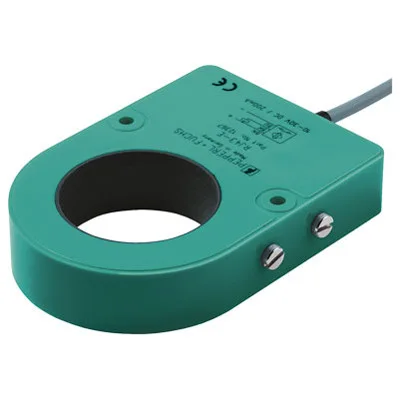
S
Safety Function
Proximity sensors can be used to provide safety functions in industrial applications, such as those involving hazardous machinery. Safety functions are designed to detect and prevent dangerous situations by automatically stopping or slowing down machinery when necessary.
SIL (Safety Integrity Level) and PL (Performance Level) are two common standards used to assess the reliability of safety functions provided by proximity sensors. SIL is a measure of the effectiveness of a safety function, ranging from SIL 1 (low risk) to SIL 4 (high risk). PL is a similar measure, ranging from PL a (low risk) to PL e (high risk).
Proximity sensors can be rated according to SIL and PL requirements, depending on the application. For example, in a safety-critical application such as a large conveyor system, proximity sensors with a SIL 2 or SIL 3 rating may be required to ensure safe operation. Similarly, in applications requiring compliance with the Machinery Directive, proximity sensors may need to meet a minimum PLd (Performance Level d) rating to ensure the safety of the machinery.
Sensing Distance
The Sensing Distance and Operating Distance are the same, but the names used by manufacturers may vary. The sensing distance of a proximity sensor varies depending on the specific design and model of the sensor. It is typically specified by the manufacturer and can be influenced by various factors such as the size and shape of the sensor, the type of target material being detected, and the operating conditions.
For example, a cylindrical proximity sensor with a larger diameter will typically have a longer sensing distance than a sensor with a smaller diameter. (Example: M8: 2mm Sensing, M12: 4mm Sensing, M18: 8mm Sensing, M30: 15mm Sensing) Similarly, a rectangular proximity sensor with a larger surface area may have a longer sensing distance than a smaller sensor.
It is important to refer to the manufacturer’s specifications for the specific proximity sensor being used to determine its sensing distance under various conditions. Factors such as target size, material, and ambient conditions such as temperature and electromagnetic interference can also affect the sensing distance of a proximity sensor.
SIL 1
Safety Integrity Level 1 is the lowest level of safety, providing basic risk reduction. It is suitable for low-risk applications where the failure of the safety function is unlikely to result in serious injury or loss of life.
SIL 2
Safety Integrity Level 2 provides a higher level of safety than SIL 1 and is used in medium-risk applications. It offers greater risk reduction and is suitable for applications where the failure of the safety function could result in minor injuries.
SIL 3
Safety Integrity Level 3 provides a high level of safety and is used in high-risk applications. It provides greater risk reduction than SIL 2 and is suitable for applications where the failure of the safety function could result in serious injuries.
SIL 4
Safety Integrity Level 4 provides the highest level of safety and is used in the most critical applications. It offers the greatest risk reduction and is suitable for applications where the failure of the safety function could result in loss of life or catastrophic events.
Slot Type Design
Slot-type proximity sensors are a type of non-contact sensor that detects the presence or absence of objects through a slot in a housing.
They work by emitting an infrared light beam or other types of light and detecting the interruption of the beam caused by an object passing through the slot.
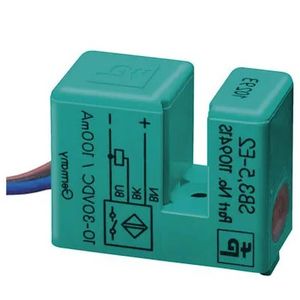
Switching Frequency
The switching frequency of a proximity sensor refers to how quickly the sensor can detect and respond to changes in its sensing range. It is typically measured in Hertz (Hz) and refers to the number of times per second that the sensor can switch its output state from open to closed (or vice versa).
The maximum switching frequency of a proximity sensor depends on various factors, such as the type of sensor, the sensing range, and the load it is switching.
Higher switching frequencies are desirable in applications that require fast detection and response times, such as in high-speed manufacturing processes.
Switching Function
Proximity sensors are devices that detect the presence or absence of an object within a specific range and output a signal indicating its status. The switching function of a proximity sensor refers to how it operates and outputs its signal.
There are two types of switching functions for proximity sensors: Normally Open (NO) and Normally Closed (NC). The choice of switching function depends on the specific application requirements.
Conclusion
Understanding the terminology used in inductive proximity sensors is essential for selecting the right sensor for your application, troubleshooting any issues that may arise, and communicating effectively with suppliers and colleagues.
We have covered over 50 key terms and concepts related to inductive proximity sensors, ranging from basic features like housing design and cable type to advanced safety functions like SIL2 and SIL3. By familiarizing yourself with these terms.

